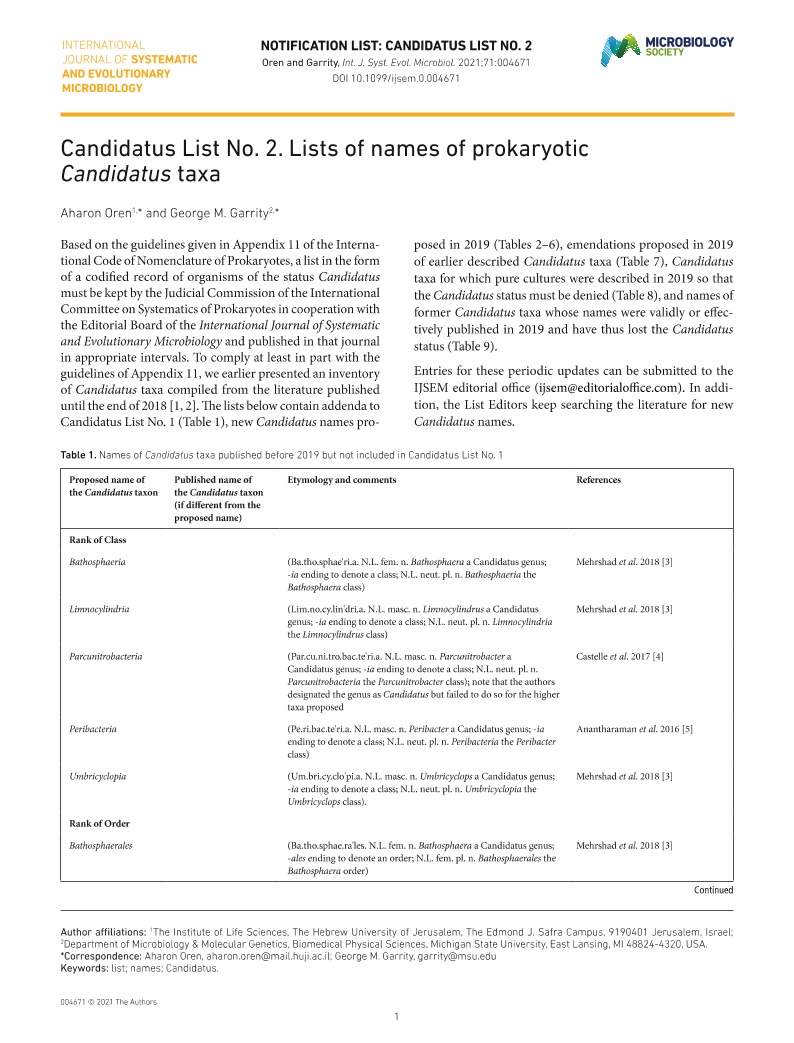
Full text loading...
 and George M. Garrity2
and George M. Garrity2

Candidatus List No. 2. Lists of names of prokaryotic Candidatus taxa, Page 1 of 1
< Previous page | Next page > /docserver/preview/fulltext/ijsem/71/4/ijsem004671-1.gif
There is no abstract available.

Article metrics loading...

Full text loading...
References


Data & Media loading...
